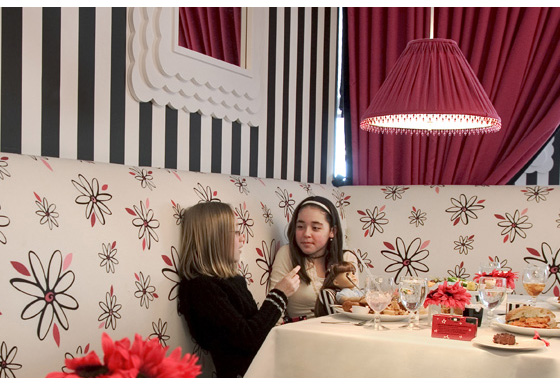
It’s back to school time and consumers are shopping for clothes, shoes, and school supplies in preparation for the classroom. But who is actually deciding what to buy, kids or their parents? Sure, maybe the parents foot the bill, but today’s brand savvy kids are increasingly calling the shots. If income-earning teens and adults have purchasing power, kids have “pester power” just the same. Last summer, MSNBC reported that tweens – kids between the age of 8 and 12 – account for more than $40 billion in spending power and influence. Empowered by computers, cell phones and social networks at an earlier age than previous generations, today’s tweens are already seeking the ways and means to express their independence. So how do retailers balance kids’ wants with parents’ needs? Here are some examples of retail environments where we’ve had the opportunity to answer that question.

The Kuwaiti retailer, Baroue, emphasizes exploration, education and imagination through a series of experiential spaces. With a play area at the center of the store, Baroue offers a supervised environment, incorporating RFID technology so that parents can track and locate younger children throughout the store. Playful graphics and interactive elements attract and entertain the kids, while the parents’ comfort is held paramount.

Similarly, P.S. by Aeropostale targets the tween market with graphic tees and jeans for its young target market in an interactive environment featuring text message display screens on the walls and floors. A unique communication system between the dressing room and sales floor allows Mom or Dad to easily keep tabs, but empowers the child to be the decision maker.

Aboard Royal Caribbean’s Oasis of the Seas, the retailers Candy Beach and Pinwheels offer environments that are both nostalgic for adults and playful for children – including candy buckets resembling beach toys and shopping bags that can literally be turned into pinwheels. Whether the customer is a child making his own selections or an adult choosing souvenir gifts to take back home, both can feel comfortable.

The Deegie’s Carma store in Leawood, Kansas, combined the best elements of designer boutiques and department stores to become a vibrant place for young people just entering the market to craft their individual fashion identity. In this type of store the shoppers tend to be teenagers who shop with friends rather than parents, so they’re breaking out on their own with cash in hand and seek an environment where they can feel grown up and independent.

Finally the American Girl stores are designed to be destinations that nurture the relationship between mother and child. Characters from other cultures, distant continents and past centuries bring an educational component to the environment. And young patrons with dolls in-hand are encouraged to explore, touch, sit, relax, and gather with friends – inspiring bonds and brand loyalty for years to come.
 |
John Bricker is a principal in Gensler’s New York office and a leader of the firm’s global Brand Design practice. With Gensler for more than 30 years, John’s holistic approach to the design process encompasses brand development, retail environments, branded workplaces, showrooms, exhibition design, identity, print, and environmental communications. Contact him at john_bricker@gensler.com. |